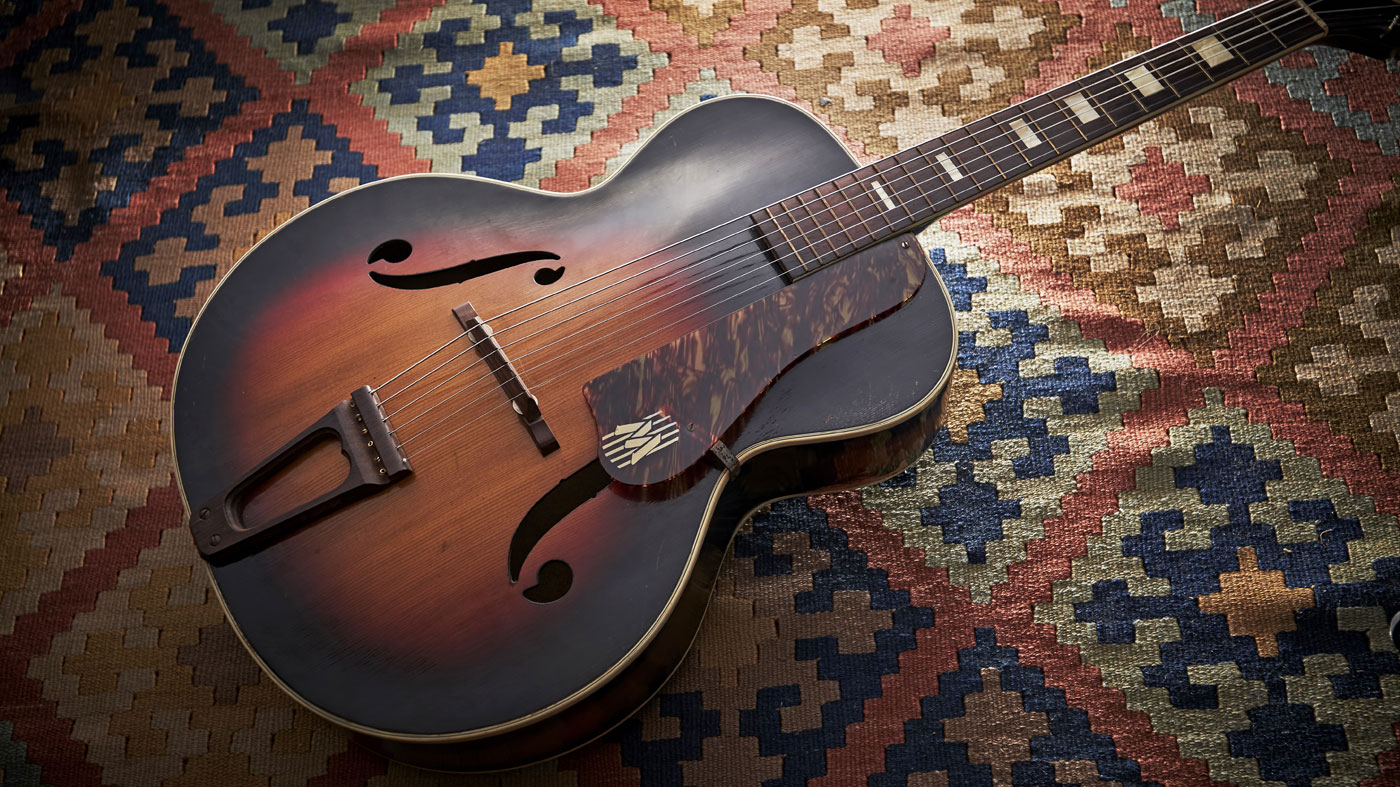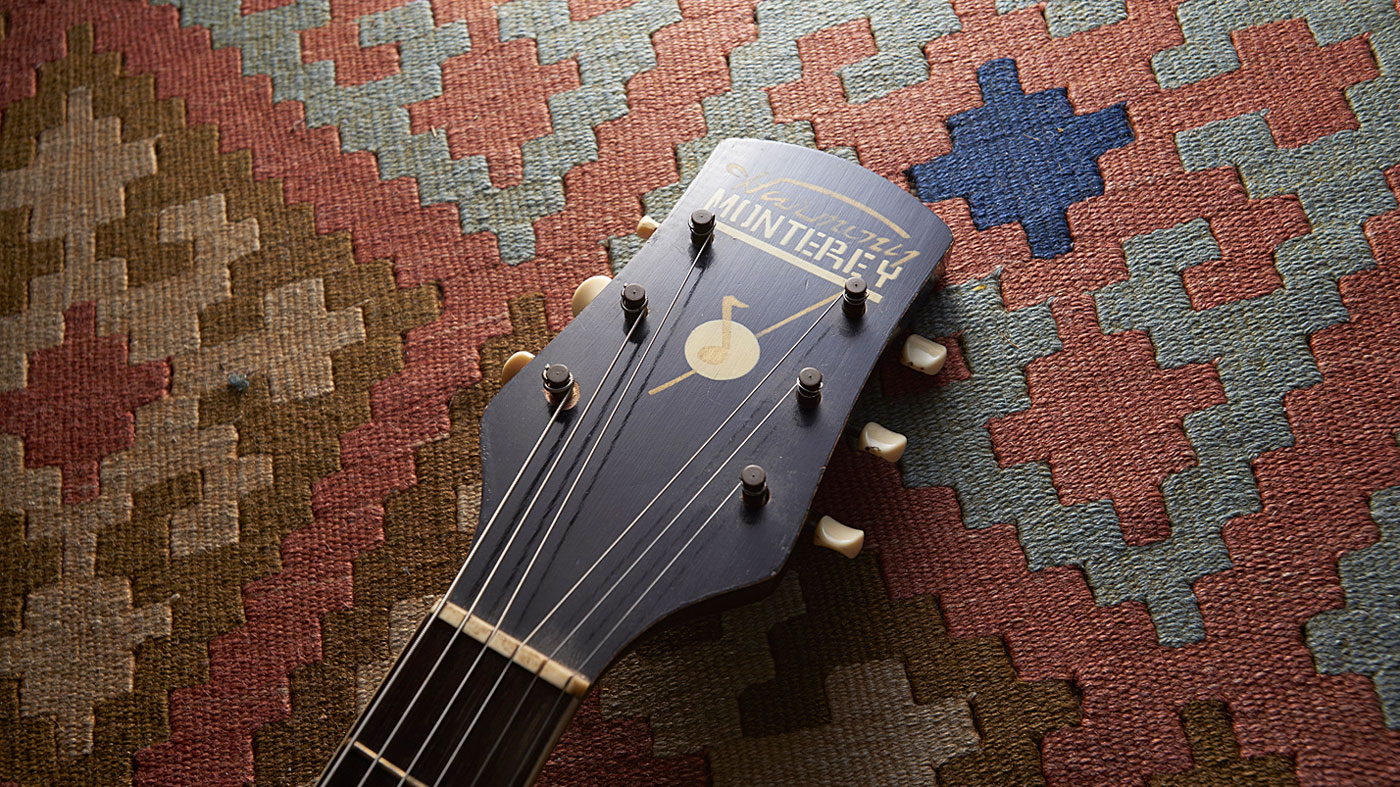
Harmony Guitars are one of the USA’s most unsung brands and yet it’s surprising how often the name comes up in interviews when players of a certain age are quizzed as to their first instrument.
It’s said that Pink Floyd’s Syd Barrett’s first guitar was a ’63 Harmony Sovereign and Jimmy Page has revealed that the acoustic guitar parts on much of Led Zeppelin III and IV’s Stairway To Heaven were recorded on a Sovereign, too, prior to him purchasing a Martin D-28 in the mid-1970s.
The guitar we’re looking at here is from the mid 1940s when the archtop was still in its element
Founded by Wilhelm Schultz in 1892, the Harmony company was subsequently purchased by Sears, Roebuck & Co in 1916. Producing a range of banjos, mandolins and guitars the Chicagobased company went from strength to strength, peaking in the mid 1960s with sales in excess of 350,000 instruments in the course of just one year.
The guitar we’re looking at here is from the mid 1940s when the archtop was still in its element and jazz was busy embracing the bebop era. The H1456 Monterey was produced between 1944 and 1968 and was one of the company’s top range models at the time.
Their 1957 catalogue reveals that the Monterey was a Grand Auditorium model, with a “striking sunburst polished finish” sporting maple back and sides, selected spruce top and a celluloid bound rosewood fingerboard.
An original Monterey would have set you back around $50 in the mid 1940s and prices on today’s vintage market tend to be at the sober end, with models like this one pitched around the £600-700 mark.
We couldn’t resist playing a few jazz chords on the Monterey during the photoshoot and we were rewarded with a wonderfully warm, smooth acoustic response - a bargain for sure!
Want all the hottest music and gear news, reviews, deals, features and more, direct to your inbox? Sign up here.
Body
Notable Monterey players include Scotty Moore and Elvis Presley, who can be seen playing a borrowed Harmony in the film GI Blues.
The H1456 model bears what Harmony refer to as a “striking sunburst polished fi nish” but its stablemate, the H1457, was available in blonde.
Tailpiece
Produced at the tail end of WWII when metal was still in short supply, having been diverted to the arms trade, the Monterey has what’s become known as a “wartime production wooden tailpiece” as opposed to the later metal version that was in place just two years later.

Headstock
The Monterey’s headstock logo has something of an art deco design to it - on some later models (the Scotty Moore H950 for instance) the model name and musical symbol background were lipstick red.
Neck
A 20-fret rosewood fingerboard with block inlays and a 25.25inch (642mm) scale length, Monterey models prior to 1956 were made without truss rods - but our 72-year-old sample here still plays like a dream
Binding
The Monterey’s body is bound front and back with black and white celluloid, with a tortoiseshell pick guard bearing a stylish capital ‘M’ - the guitar might have signs of wartime austerity about it, but we like its refi ned good looks!
We would like to thank Vintage ‘n’ Rare Guitars, Bath for allowing us access to this wonderful instrument.
Guitarist is the longest established UK guitar magazine, offering gear reviews, artist interviews, techniques lessons and loads more, in print, on tablet and on smartphones
Digital: http://bit.ly/GuitaristiOS
If you love guitars, you'll love Guitarist. Find us in print, on Newsstand for iPad, iPhone and other digital readers


